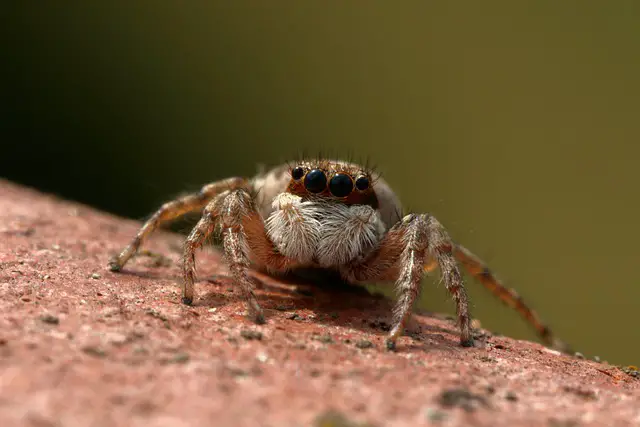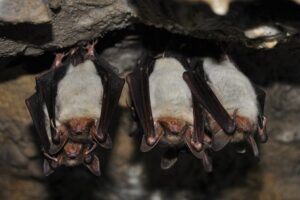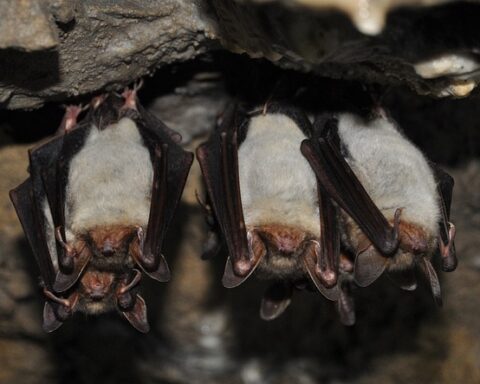In the normal sense of the word, spiders don’t have ears. Some spiders have nerve-based receptors that allow them to hear. However, evidence is mounting that they can hear some things like jumping spiders and fishing spiders. These receptors function as ears by picking up soundwaves that are transmitted to the brain. While spiders have a unique ability to sense prey’s vibrations while tiptoeing across their webs, it’s not considered hearing.
Stafstrom claims that the most remarkable thing about ogre faced spiders’ hearing ability is their ability to hear. The study was published in Current Biology today. Stafstrom observed that ogrefaced spiders can sense both the low frequency sounds of insect wingbeats as well the high-frequency calls of birds, which is something not possible for jumping spiders.
Sen Sivalinghem of University of Toronto’s sensory biologist said that finding such advanced hearing within such a simple creature could help scientists understand how it evolved.
These spiders can be scary, crawly, or even a source of fear for some. Now scientists know that spiders can hear from across a room.
Because spiders don’t technically have ears, the discovery was unexpected. New research shows that spiders’ legs can detect human speech from several meters away.
 In Westbury (a northern Tasmania town that was hit by flooding), ‘Ballooning’ spiders make thick webs to protect trees.
In Westbury (a northern Tasmania town that was hit by flooding), ‘Ballooning’ spiders make thick webs to protect trees.
World’s most extensive web? Flood-hit Spiders Find Higher Ground
Paul Shamble (an arachnologist at Cornell University) said that the new discovery is very exciting as it challenges the assumption that the world arachnids lives in sight and touch.
“Surprisingly,” he explained, “We discovered that they also possess a keen sense of hearing.” “They can hear sounds farther than anyone thought. Even though they lack the eardrums found in most animals with long distance hearing, their ears are still able to pick up sound at great distances.
“I’m unsure if everyone’s going o be thrilled that spiders have the ability to hear them as good as see them,” he stated.
Hearing in a jumping snake
Shamble and colleagues discovered that they could make direct electrical recordings using the brains of North American jumping snakes. This was a difficult technical feat as the spider is pressurised like a tyre. This means that previous attempts at recording their brains from the outside shell caused the spider to explode.
Initially, the team had been trying to figure out how these creatures process visual information. However they discovered that their brains would respond when a chair was moved around the laboratory or one of the members of the team clapped.
“That was extraordinary because the received wisdom at the time was that spiders can hear sounds,” stated Prof Ronald Hoy. This paper was published in Current Biology.
Maratus. tasmanicus is one seven-species new peacock spiders, according to Jurgen Otto (Sydney biologist).
Scientist finds seven new species ‘fairly cute,’ peacock web spiders
The spiders’ sense of hearing relied on tiny hairs attached to their forelegs. Scientists found that when water droplets were placed on the spiders legs to dampen vibrations, the brain’s auditory neurons stopped firing in response.
Further investigations showed that the spiders could hear claps over five metres and were most sensitive at low frequencies (between 80-130Hz). This would match the wingbeats in parasitoid wasnps, which are predators of jumping spiders. It also matches the pitch of a very loud male voice.
Ogrefaced spiders are said to have the biggest eyes of all the known spider species. They are also known to be able to see in the dark up to 2,000x better than humans. The arachnids’ incredible eyesight is just one tool they have when they hunt for food. This was revealed in a new study.
These spiders have an innate ability to hear. According to the study published Thursday in Current Biology.
According to the research team, the spiders detect sounds at least 6.5 feet away and can pick up frequencies upto 10 kilohertz using the receptors located on their legs.
Both laboratory experiments and field observations showed that the spiders were able to respond to auditory stimuli in the low frequency range of flies, moths, or moths’ wing beats.
Sound detection and threat detection
The study found that Ogre-faced ogre spiders react differently depending on the frequency of sounds they hear.
To hunt for food they would use a “backwards strike” and respond to low frequency sounds. They stopped moving when they heard high frequencies that were close to bird calls.
This does not mean that the spiders cannot hear high-frequency sounds. Laboratory experiments by scientists to observe the brain activity of the spiders in response to these sounds proved they can hear them.
Researchers suspect the spiders could ignore these sounds to defend themselves, something they will continue to study.
We know that many birds eat spiders. I’ve seen lots of birds in the areas these spiders inhabit, and they are chirping in these high frequency bands that these spiders can detect. Stafstrom indicated that this might be a warning sign that someone might be coming after me soon.












